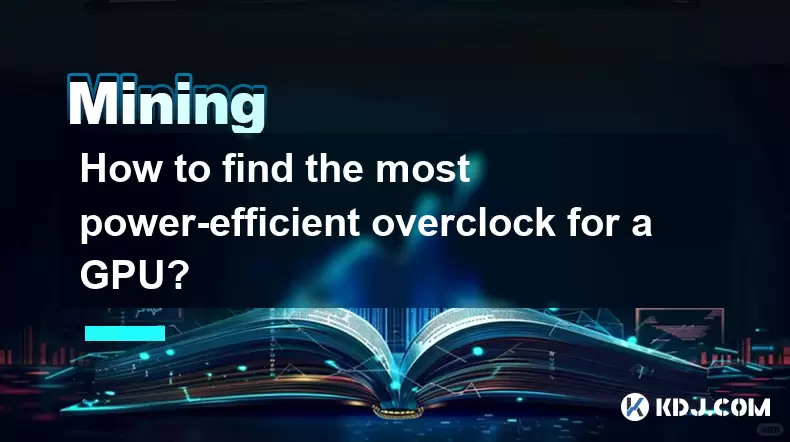-
 Bitcoin
Bitcoin $119,448.2396
0.27% -
 Ethereum
Ethereum $2,992.9919
0.78% -
 XRP
XRP $2.9074
1.58% -
 Tether USDt
Tether USDt $1.0001
0.00% -
 BNB
BNB $687.9097
-0.40% -
 Solana
Solana $161.5804
-0.47% -
 USDC
USDC $0.9998
0.01% -
 Dogecoin
Dogecoin $0.1948
-2.10% -
 TRON
TRON $0.3013
-0.08% -
 Cardano
Cardano $0.7286
-3.16% -
 Hyperliquid
Hyperliquid $47.3153
-3.81% -
 Stellar
Stellar $0.4543
-9.79% -
 Sui
Sui $3.8809
5.63% -
 Chainlink
Chainlink $15.6262
-0.55% -
 Hedera
Hedera $0.2368
-5.31% -
 Bitcoin Cash
Bitcoin Cash $501.2030
-0.80% -
 Avalanche
Avalanche $21.0650
-1.43% -
 UNUS SED LEO
UNUS SED LEO $9.0006
-0.39% -
 Shiba Inu
Shiba Inu $0.0...01310
-1.90% -
 Toncoin
Toncoin $3.0040
1.56% -
 Litecoin
Litecoin $93.8936
-1.20% -
 Monero
Monero $341.8918
1.27% -
 Polkadot
Polkadot $3.9087
-3.05% -
 Uniswap
Uniswap $8.9599
4.78% -
 Dai
Dai $0.9999
0.02% -
 Ethena USDe
Ethena USDe $1.0005
-0.02% -
 Bitget Token
Bitget Token $4.3954
-0.14% -
 Pepe
Pepe $0.0...01207
-2.26% -
 Aave
Aave $314.5223
1.72% -
 Bittensor
Bittensor $408.6988
2.76%
How to find the most power-efficient overclock for a GPU?
Optimize GPU overclocking by balancing core/memory clocks and undervolting to maximize hashrate while minimizing power consumption for efficient cryptocurrency mining.
Jul 13, 2025 at 11:28 pm

Understanding Power Efficiency in GPU Overclocking
Power efficiency in GPU overclocking refers to achieving the highest possible performance while consuming the least amount of electrical power. This is crucial for cryptocurrency miners, where profitability hinges on maximizing hashrate while minimizing energy costs. A power-efficient overclock ensures that each watt consumed translates into more mining output rather than excessive heat and wasted electricity.
To begin, it's essential to understand your GPU’s architecture and its power delivery system. Modern GPUs, especially those from NVIDIA and AMD, have advanced power management features such as PowerTune or PowerMizer, which dynamically adjust voltage and clock speeds based on load. These systems can be fine-tuned manually for better efficiency.
Selecting the Right Tools for Monitoring and Adjusting GPU Settings
Before diving into actual overclocking, you need a robust set of tools to monitor and tweak your GPU settings. The following software tools are widely used in the crypto community:
- MSI Afterburner: Offers real-time control over core clock, memory clock, voltage, and fan speed.
- HWInfo64: Provides detailed insights into power draw, temperatures, and utilization.
- GPU-Z: Useful for logging performance metrics and checking sensor readings.
Using these tools, you can track real-time power consumption, temperature, and hashrate changes as you apply different overclocking profiles. It’s important to ensure that all monitoring tools are updated to support your specific GPU model.
Setting a Baseline for Performance and Power Consumption
Before making any adjustments, establish a baseline by running your mining software (like NiceHash, PhoenixMiner, or NBMiner) under default settings. Record the following data:
- Average hashrate
- Power draw at the wall (using a wattmeter like Kill A Watt)
- GPU temperature
- Fan speed
This baseline will serve as a reference point to compare against after applying overclocks. Without this step, it becomes difficult to determine whether the changes made are beneficial in terms of both performance and efficiency.
Adjusting Core Clock and Memory Clock for Optimal Efficiency
Start with small increments when adjusting clocks. For most NVIDIA GPUs used in mining (e.g., RTX 3060, 3070, 3080), increasing the core clock by 10–50 MHz and the memory clock by 50–200 MHz can yield improvements without significantly increasing power draw.
Use MSI Afterburner to make these adjustments. Apply the following steps:
- Increase core clock incrementally and test stability
- Repeat the process for memory clock
- Monitor temperature and power usage after each change
- Run mining software for at least 10 minutes between changes
The goal is to find the sweet spot where hashrate increases but power consumption remains stable or rises only slightly. If power draw jumps significantly without a proportional increase in hashrate, revert to the previous setting.
Undervolting for Enhanced Power Efficiency
Undervolting involves reducing the voltage supplied to the GPU while maintaining or even improving performance. Since power consumption is proportional to voltage squared (P = V²/R), even minor reductions in voltage can lead to significant power savings.
In MSI Afterburner, you can create a custom voltage curve or use presets if available. Here’s how to proceed:
- Lower voltage offset gradually (e.g., -50 mV steps)
- Test mining stability after each adjustment
- Monitor temperature, power draw, and hashrate
Many miners report success with undervolting their GPUs by 100–250 mV, resulting in lower temperatures, reduced power consumption, and sometimes even higher hashrates due to improved thermal headroom.
Testing Stability and Measuring Results
After applying a new overclocking profile, it’s critical to test for stability and measure the actual impact on power efficiency. Let your rig run for several hours while logging data using HWInfo64 or similar tools.
Key metrics to analyze include:
- Average hashrate
- Stability (no crashes or kernel timeouts)
- Temperature (ensure it stays within safe limits)
- Power consumption (measure via a hardware wattmeter)
Compare these results with your baseline to determine if the overclocked configuration is indeed more power-efficient. Remember, the ideal overclock isn’t necessarily the one with the highest hashrate, but the one that gives the best performance per watt.
Frequently Asked Questions
Q: Can overclocking damage my GPU?
A: Yes, improper overclocking—especially with high voltage—can reduce GPU lifespan. Always monitor temperatures and avoid pushing voltages beyond safe levels.
Q: Is it necessary to update GPU drivers before overclocking?
A: While not mandatory, updating to the latest drivers ensures compatibility with overclocking tools and may unlock additional tuning options or performance improvements.
Q: How often should I re-test my overclock settings?
A: It’s good practice to re-test whenever there are changes in ambient temperature, mining software updates, or if you notice unstable performance.
Q: Do all GPU models respond equally well to undervolting?
A: No, response to undervolting varies by model and manufacturer. Some GPUs offer better voltage control than others, particularly in the NVIDIA RTX 30 series and certain AMD RX 6000 series cards.
Disclaimer:info@kdj.com
The information provided is not trading advice. kdj.com does not assume any responsibility for any investments made based on the information provided in this article. Cryptocurrencies are highly volatile and it is highly recommended that you invest with caution after thorough research!
If you believe that the content used on this website infringes your copyright, please contact us immediately (info@kdj.com) and we will delete it promptly.
- TAC Mainnet & Native Token Launch: A New Era for Telegram?
- 2025-07-15 18:50:12
- Ripple's RLUSD Stablecoin Eyes EU Expansion: Luxembourg Launch Under MiCA
- 2025-07-15 18:50:12
- Whales, DeFi Tokens, and DOGE: A New Era of Crypto Investments?
- 2025-07-15 19:10:12
- Bitcoin Yield Takes Center Stage: Function's $10M Raise & Galaxy Digital's Bet
- 2025-07-15 19:10:12
- ERC-20 Tokens & Ethereum Treasuries: GameSquare's Bold Move
- 2025-07-15 19:15:12
- ICO, BlockchainFX, Crypto Investment: The Buzz in the Big Apple
- 2025-07-15 19:15:12
Related knowledge

How are crypto mining profits taxed?
Jul 14,2025 at 12:28am
Understanding Cryptocurrency Mining and TaxationCryptocurrency mining involves validating transactions on a blockchain network and earning rewards in ...

How to keep a mining rig cool
Jul 12,2025 at 01:42pm
Understanding the Importance of Cooling in Mining RigsCryptocurrency mining is an intensive process that places heavy demand on hardware components, p...

How much does it cost to start crypto mining?
Jul 13,2025 at 12:22am
Understanding the Basic Costs of Crypto MiningStarting crypto mining involves several upfront and ongoing expenses. The primary costs include hardware...

What is the most profitable crypto to mine?
Jul 13,2025 at 07:00am
Understanding Mining Profitability in CryptocurrencyWhen evaluating the most profitable crypto to mine, it's essential to consider several factors tha...

What do I need to start mining crypto?
Jul 13,2025 at 12:28am
Understanding the Basics of Crypto MiningCrypto mining is the process by which transactions are verified and added to a blockchain, and new coins are ...

How does crypto mining work?
Jul 13,2025 at 11:01am
Understanding the Basics of Crypto MiningCrypto mining is the process through which new cryptocurrency coins are introduced into circulation and trans...

How are crypto mining profits taxed?
Jul 14,2025 at 12:28am
Understanding Cryptocurrency Mining and TaxationCryptocurrency mining involves validating transactions on a blockchain network and earning rewards in ...

How to keep a mining rig cool
Jul 12,2025 at 01:42pm
Understanding the Importance of Cooling in Mining RigsCryptocurrency mining is an intensive process that places heavy demand on hardware components, p...

How much does it cost to start crypto mining?
Jul 13,2025 at 12:22am
Understanding the Basic Costs of Crypto MiningStarting crypto mining involves several upfront and ongoing expenses. The primary costs include hardware...

What is the most profitable crypto to mine?
Jul 13,2025 at 07:00am
Understanding Mining Profitability in CryptocurrencyWhen evaluating the most profitable crypto to mine, it's essential to consider several factors tha...

What do I need to start mining crypto?
Jul 13,2025 at 12:28am
Understanding the Basics of Crypto MiningCrypto mining is the process by which transactions are verified and added to a blockchain, and new coins are ...

How does crypto mining work?
Jul 13,2025 at 11:01am
Understanding the Basics of Crypto MiningCrypto mining is the process through which new cryptocurrency coins are introduced into circulation and trans...
See all articles

























































































